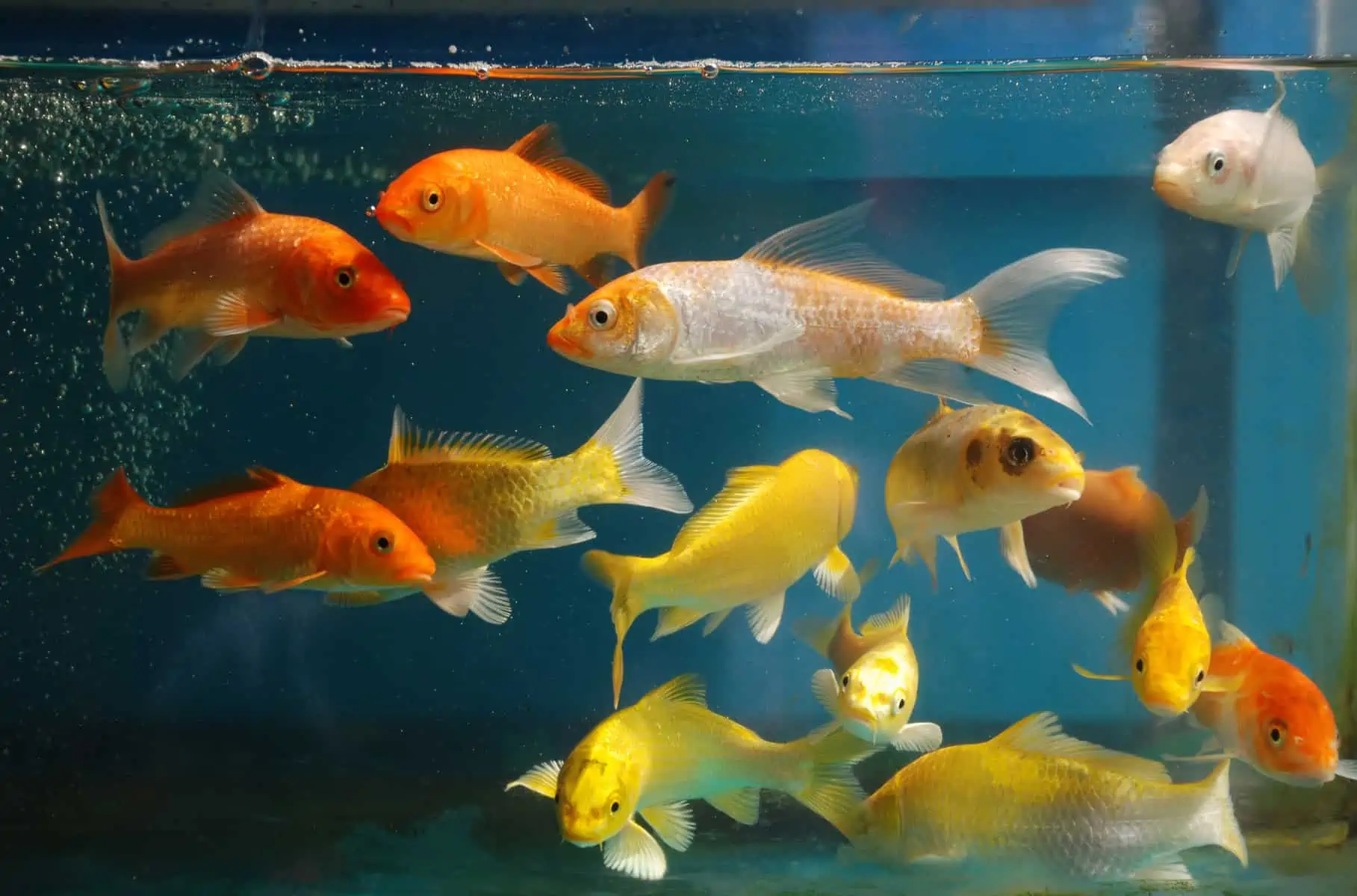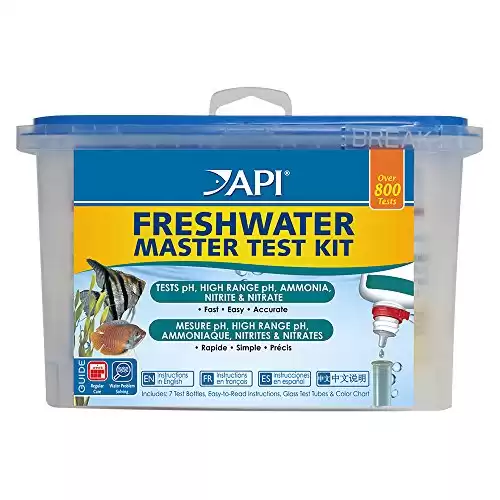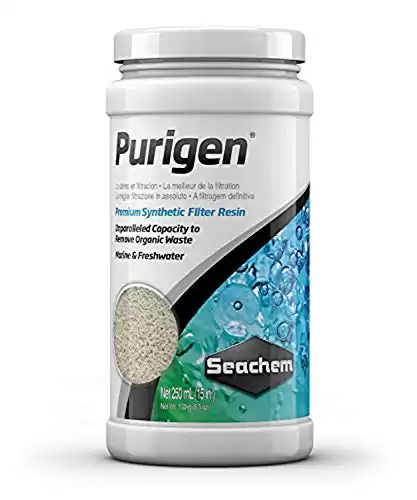If you have well water and are thinking about getting an aquarium, you’re probably wondering if you can use it for your fish.
The short answer is yes! You can use well water or borehole water for your fish, although in some instances you’ll need to treat it first.
This involves a bit of understanding about water chemistry and the water preferences of your particular fish, so let’s take a closer look together at using well water for your aquarium.
The Advantages of Using Well Water In Your Aquarium
In general, well water is a fairly clean, natural source of water. Lying deep in the ground, it has already been filtered to some extent by the soil on its way down.
This can give it an advantage over municipal water supplies which are often laced with chlorine, chloramine, and fluoride. On rare occasions, municipal water can also contain trace amounts of ammonia or asbestos.
In sufficient quantities, all of these chemicals can be dangerous to your fish and aquarium ecology, meaning it’s necessary to treat regular tap water every time you add it to the aquarium.
If your well water is pure enough and of the right composition to match your fish, you might be able to skip the whole water purifying episode each time, which is a big bonus. But that depends on several things…
Potential Problems With Using Well Water In Aquariums
It’s rare to find a perfect source of water for an aquarium, and water from wells and boreholes can also have problems. Here are the most important ones to know about.
Contaminants
Depending on where your well is located and what is contained in your local groundwater, your well water could be contaminated with heavy metals within the soil, nitrates and harmful bacteria from fertilizers, volatile organic compounds (VOCs) from fuels, and other contaminants from agricultural or industrial runoffs.
As you’d expect, these can be very harmful to your fish’s health so it’s important to avoid them.
Furthermore, some people treat their well water with chlorine compounds, which can be deadly to both fish and the beneficial bacteria responsible for the biological filtration of your tank (without them, your fish would quickly die of ammonia poisoning).
Water pH
If you’ve been keeping fish for a while, you’ll know how important it is to get the pH right for your fish.
Whereas Amazonian fish like Angelfish, Neon Tetra, and Silver Dollars prefer acidic-neutral water of pH 6.5-7.0, fish from hard water lakes like African Cichlids need more alkaline water with a pH of 7.4-9.3.
How acidic or alkaline your well water is will depend on your local geology. For example, if you live in an area with high levels of limestone or dolomite in the ground, your water will likely be very alkaline. In areas where the soil contains peat, the local water will be acidic.
Water Hardness
Water hardness is basically the measure of dissolved minerals within the water, and is measured in dGH (degrees of general hardness).
Just like with pH, each fish species will have its own preferences about the dGH of the water, so it’s important to get it within the right parameters.
Water that’s up to 10 dGH is considered soft, whereas water of more than 15 dGH can be defined as hard. There is also a strong connection between pH and hardness, with acidic waters being softer and alkaline waters being harder.
Fish that prefer acidic water like discus and Gouramis will also tend to like soft water, whereas alkaline-loving fish like Guppies, Mollies, and Swordtails also enjoy water that has a higher dGH.
Dissolved Oxygen
Water that’s deep underground tends to have a lower dissolved oxygen content than water that’s closer to the surface. This means well water can have a lower oxygen concentration than is ideal for your fish and may need aerating to restore sufficient oxygen levels for them to thrive.
How To Make Your Well Water Safe For Your Aquarium Fish
Test Your Well Water
The first step to making sure your well water is safe for your fish is to test it. Regular aquarium testing kits like the API Freshwater Master Test Kit are excellent for testing water pH, as well as ammonia, nitrites, and nitrates. Additional aquarium tests can also measure dissolved oxygen levels in the water.
- Accurately monitors 5 most vital water parameters levels in freshwater aquariums: pH, high range pH, ammonia, nitrite, nitrate
- Designed for use in freshwater aquariums only
- Use for weekly monitoring and when water or fish problems appear
But for well water, you’ll also need a kit that can test for contaminants. The Safe Home Well Water Test Kit is a good example of a kit that can test for additional aspects of your water quality such as chlorine, hardness, pH, nitrate, nitrite, fluoride, carbonate, iron, copper, calcium, pH, lead and coliform bacteria.
- INCLUDES 22-testing mechanisms that provide 242-total tests/kit, for 14-different parameters. See attached image of package-back, for a complete list of parameters to be tested.
- BONUS BENEFITS with each purchase – Promo Codes, E-Learning Center & Water Treatment Options. See details on attached image with this listing.
Filter Your Well Water
If you’ve tested your well water and discovered that it is the perfect match for your fish and doesn’t contain any harmful contaminants, then you could go ahead and use it in your aquarium.
If, however, it contains harmful levels of minerals such as iron, manganese, or chlorine, you’ll need to filter it.
Well water filters such as the Waterdrop Whole House Water Filter System are an inexpensive and relatively simple solution to remove large particles and sediments in your water as well as reducing more than 95% of iron, manganese, and chlorine content.
- The iron and manganese reducing filter and GAC filter will serve for up to six months before replacement. Waterdrop’s whole house water filter system features longer lifespan, therefore saving your potential replacement cost.
- The home water filtration system has passed 100,000+ water hammer tests and water pressure tests, confirm normal work under the pressure of 25-90psi without external damage and crack. The work pressure is daily water pressure in USA. Please rest assured to purchase and use it.
Alter the pH and Hardness of Your Well Water
If your well water source turns out to be too acidic or alkaline for your fish, there are a few ways you can change it to fall within the right parameters.
Make Your Well Water More Alkaline
To make acidic water harder and more alkaline, the most commonly prescribed method is to add an alkalizing agent such as baking soda to the water when you fill the tank or make a partial water change. Not much is needed, with one teaspoon needed per every 5 or 10 gallons depending on the degree to which you want to change your pH.
Another way to keep your tank water at a higher pH over longer periods is to add alkalizing substrates or rocks to your aquarium.
Dolomite gravel and limestone rocks are good for this, but be sure to add them in the right quantity and test your water regularly to make sure they’re having the desired effect.
Make Your Well Water More Acidic
If your water is too alkaline for your fish, you could try filtering the water through peat or adding Indian almond leaves or pieces of hardwood to your tank. These materials contain tannins that naturally make the water more acidic.
Tannins also turn the water a light golden brown – an effect that some aquarists like, while others don’t.
A compromise can be struck by adding a product such as Seachem Purigen which will remove the color from the water without removing the desired acidifying effect.
- FILTRATION: Purigen ranges in color from almost white (cream) to light yellow. Seachem Purigen is not a mixture of ion exchangers or adsorbents, but a unique macro-porous synthetic polymer that removes soluble and insoluble impurities from water.
Some aquarists have also tried adding white vinegar to their water to lower the pH at a rate of around half a teaspoon of white vinegar for every 10 gallons.
Once again this depends on how much you want to adjust your pH, so always follow up with water tests to be on the safe side. Too much vinegar can be toxic to fish!
Use Reverse Osmosis and Deionization Systems
The gold standard for purifying aquarium water is a combination of reverse osmosis and deionization systems.
In a nutshell, reverse osmosis removes up to 99% of contaminants by pushing them at high pressure through a semipermeable membrane.
Second up, the deionizer uses positive and negative charges to kill any last remaining microbes in the water.
Using these two processes together produces water as clean as bottled water, but with almost no mineral content. This means this method will also remove almost all of the hardness from your water and reset the pH to a neutral 7.
After treatment, it’s necessary to add minerals back to the water with a remineralization formula before introducing it to your fish tank.
If this method sounds a bit overkill for the average fishkeeper, you’re probably right, and it’s also the most expensive.
But if you’re a professional or dealing with a very delicate environment such as a saltwater aquarium or a discus tank, reverse osmosis and deionization can give you more control over your water quality than any other.
Increase The Dissolved Oxygen Content Of Your Well Water

If your tests have determined that your well water has low oxygen levels, you can replenish the oxygen in it by simply pouring from one bucket to another several times, creating lots of splashing and bubbles as you do so.
The more that the water is mixed with air, the faster the oxygen will get dissolved in it.
For a longer-term solution to oxygenating your aquarium water, you could use an airstone or a filter with a strong flow to create plenty of surface water movement and gas exchange within your tank.
Fill Your Tank and Add Some Tester Fish
Now that you’ve made your well water safe, you can go ahead and add it to your aquarium.
Just remember though, that keeping fish doesn’t come without its occasional surprises. Before adding your prized pet fish to the tank, it might be wise to test the water with some less valuable species like Guppies or Neon Tetra and watch them for a month or so first to make sure they’re healthy and well.
Once you’ve got the all-clear, you can take the final step and add your favorite fish!
Conclusion
It’s definitely possible to use well water and borehole water in an aquarium, and in some cases, it’s even preferable to municipal tap water.
But before using it in your fish tank, you must test well water thoroughly and treat it in whichever ways are necessary to make it safe for your fish.
Having followed all the steps we’ve listed above, you have every chance of creating a thriving aquarium using well water.
For our in-depth article on treating ordinary tap water, click here.






